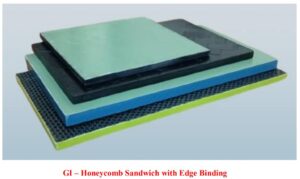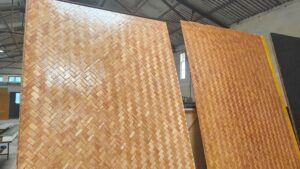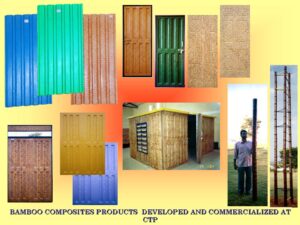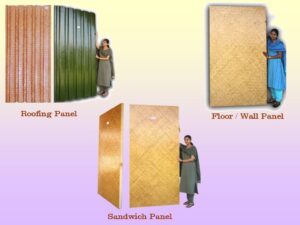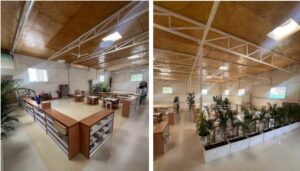For distributors and wholesalers looking to expand their catalog beyond traditional wood-based packaging and board products, bamboo composite pallets and hybrid boards provide a compelling business opportunity. These products combine engineered performance with sustainability credentials—a combination that increasingly resonates with end-users and clients seeking durability and green alternatives. Below is an exploration of the business case for stocking these materials, including product descriptions, properties, applications, pros, cons and FAQs.
What Are Bamboo Composite Pallets and Hybrid Boards?
These are engineered products made from bamboo mat laminates, high-performance resin impregnation and composite manufacturing techniques. The specification documents define a variety of related products, including multi-utility bamboo composite pallets. For example:
The product list shows “Multi utility bamboo composite pallets: Euro standard Pallets with quick fix and removable legs (1 min to fix or remove nine legs); Pallets fixed with four wheels to use as trolly; Light weight (just weighs 7 kg)”.
Hybrid boards or boards used for packaging/industrial loads may use bamboo-honeycomb or resin-impregnated bamboo laminated sheets (thicknesses, densities given). For example, bamboo honeycomb sandwich panels at thickness from 12.5 mm up to 50 mm with densities as low as ~171 kg/m³.
The specification list emphasises many core attributes: light weight, high strength/stiffness, water/moisture resistance, termite/fungus proof, corrosion resistant, thermal/sound insulation.
From a stocking perspective, these products sit at the interface between packaging/industrial pallets and high-performance board materials.
Why This Makes a Strong Business Case
1. Market demand for sustainability
Buyers in logistics, supply-chain, packaging and industrial sectors are under increasing pressure to adopt sustainable materials, reduce waste, and embrace reusable/long-life assets. Bamboo composite pallets offer a renewable alternative to traditional wooden pallets or even plastic pallets.
In board/inventory terms, hybrid boards made of bamboo composites allow distributors to differentiate from commodity MDF, plywood or particle board by offering renewable/faster growing raw material derivatives.
2. Performance advantage
The specification documents list attributes such as high strength, high stiffness, moisture resistance, termite proofing, and more. These translate into fewer warranty issues, longer service life, less replacement cost—strong selling points toward industrial clients.
Pallets that weigh less yet carry high loads reduce handling costs, shipping weight costs, transport fuel costs and potentially damage risk.
Hybrid boards used in industrial, packaging, or high duty contexts can carry higher value and margin.
3. Margin and differentiation potential
Because these are higher-value engineered materials, the margin potential is better than standard commodity pallets or plain plywood.
Being among first to offer these in certain regions can give distributors competitive advantage and positioning as “premium sustainable supplier”.
4. Product line expansion
Stocking bamboo composite pallets opens doors to rental/reuse models, logistics clients, cross-selling to existing board clientele.
Hybrid boards link to furniture, joinery, industrial packaging, transport crates, architectural panels.
5. Lifespan and total-cost-of-ownership appeal
For purchasers, initial cost may be higher than basic pallets, but life-cycle cost (fewer replacements, less damage, less repair) is often lower—this is a strong sales argument.
For boards/hybrid materials, improved durability, termite/fungus resistance and better dimensional stability can reduce customer complaints and returns.
Applications Suitable for Distributors
Pallets & load platforms: Lightweight bamboo composite pallets for logistic use, reuse cycles, heavy loads in manufacturing, export crates.
Hybrid boards for packaging crates: Boards or panels used as side-walls in crates, transport units, heavy machinery skids.
Industrial flooring, shelving, load-bearing boards: Hybrid bamboo boards with high stiffness and density for industrial environments.
Reusable packaging systems: Crates, trolleys, pallets with removable legs/wheels as noted in product literature.
Board line extension: Engineered bamboo boards and sheets in thicknesses, for furniture, interiors, bespoke packaging.
Pros & Cons for Your Distribution Strategy
Pros
Differentiation: Less commoditised than plain wood material; unique market offering.
Adds eco-narrative: Sustainability credentials help in marketing, especially to larger OEMs or green projects.
Performance benefit: Clients can perceive durability, weight saving, replacement cost savings.
Wide range: Boards, pallets, hybrid panels—all can be part of one product family.
Potential to convert existing customers: If you already stock wood panels/pallets, bamboo composite offerings can be logical upsell.
Cons / Considerations
Higher upfront cost: Customers comparing just sticker price may balk; you need to sell value.
Supply chain and availability: Being specialised materials, ensure you have reliable supplier, stock, lead times.
Client education required: Many buyers familiar with wood pallets/boards may need convincing of composite benefits.
Finish/trade-in aspects: For pallets, return value, reuse cycles, lifespan need tracking; for boards, compatibility with fabricators, adhesives, finishing processes needs verification.
Pricing pressure: Commodity pallets/boards may undercut engineered composites; must emphasise value differentiator.
Standardisation & certifications: Pallets/boards may require load testing, logistics certification, safety compliance—need to provide supporting data to clients.
Frequently Asked Questions (FAQs)
Q 1: Are bamboo composite pallets really stronger or lighter than wood pallets?
A: According to product literature for multi-utility bamboo composite pallets, light-weight designs (e.g., 7 kg pallet) with removable legs/wheels are cited. The engineered process of bamboo mat, resin impregnation and hot-press can deliver improved strength-to-weight ratios compared to untreated wood pallets.
Q 2: Can hybrid boards made of bamboo composites replace standard plywood or crate boards?
A: Yes, in many cases. The specification lists bamboo laminated sheets (e.g., 4.0 mm thickness, density ~750 kg/m³) with high strength and moisture resistance. When clients need boards for crates, packaging, heavy-duty shelving or industrial panels, these products are viable substitutes.
Q 3: What are the major selling points when talking to prospective clients?
A: Highlight: renewable raw material (bamboo), durability (moisture/termite/fungus resistance), weight reduction (lower handling/shipping cost), lifecycle value (longer service life), and differentiation (premium sustainable product).
Q 4: Are there stand-out applications where these composites make most sense?
A: Yes. Export logistics crates needing reusable pallets, OEM manufacturing requiring lightweight/high-strength boards, modular packaging systems needing durable panels, green building logistic operations wanting sustainable assets.
Q 5: What should I check before stocking these products?
A: Verify: sheet/pallet size and variants, thickness/density/load rating, surface finish and compatibility with client workflows, supplier lead time and stock availability, pricing structure, warranty or reuse cycles, sustainability certification or raw material chain evidence.
Q 6: What risks should I communicate to clients?
A: Need for proper finish/edge treatment (especially for boards), potential higher initial cost vs standard wood options, confirmation of load performance for pallets (vs standard wood/steel pallets), ensuring client‘s fabricators/installers are comfortable with composite board fabrication.
Summary
For distribution professionals, stocking bamboo composite pallets and hybrid boards is a smart strategic move. These products offer higher value, widen your product range, and align with sustainability trends—without sacrificing performance. While initial cost and education effort are higher than commodity wood materials, the differentiation, client value proposition and potential margin upside make the business case strong.

